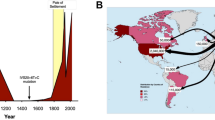Abstract
The common familial dysautonomia (FD) mutation causes a splicing defect that leads to production of both wild-type (WT) and mutant (MU) IKBKAP mRNA. Because drugs may alter splicing, seven drugs, fludrocortisone, midodrine, diazepam, albuterol, clonidine, caffeine, and dopamine were screened. Since only fludrocortisone negatively altered gene expression, we assessed fludrocortisone’s efficacy in treating postural hypotension, and its effect on survival and secondary long-term FD problems. For 341 FD patients we obtained demographic data and clinical information from the last Center evaluation (most current or prior to death) including mean blood pressures (supine, 1 min erect and 5 min erect) and history regarding syncope and presyncope symptoms. For 175 fludrocortisonetreated patients, data from the evaluation prior to start of fludrocortisone and from the last Center evaluation were compared. The fludrocortisone-treated patient cohort was compared to the nontreated patient cohort with respect to overall survival and event-free survival for crisis frequency, worsening gait, frequent fractures, spine curvature, renal insufficiency, and pacemaker insertion. Overall survivals of patients on fludrocortisone alone, on fludrocortisone and midodrine, and on neither drug were compared. Cumulative survival was significantly higher in fludrocortisone-treated patients than in non-treated patients during the first decade. In subsequent decades, the addition of midodrine improved cumulative survival. Fludrocortisone significantly increased mean blood pressures and decreased dizziness and leg cramping, but not headaches or syncope. Fludrocortisone was associated with more long-term problems, which may reflect more symptomatic status associated with longer survival. Our data suggest that fludrocortisone has clinical efficacy despite negative in vitro observations on gene expression.
Similar content being viewed by others
References
Anderson SL, Coli R, Daly IW, et al. (2001) Familial dysautonomia is caused by mutations of the IKAP gene. Am J Hum Genet 68:753–758
Anderson SL,Qiu J, Rubin BY (2003) Tocotrienols induce IKBKAP expression: a possible therapy for familial dysautonomia. Biochem Biophys Res Commun 306:303–309
Anderson SL, Qiu J, Rubin BY (2003) EGCG corrects aberrant splicing of IKAP mRNA in cells from patients with familial dysautonomia. Biochem Biophys Res Commun 310(2):627–633
Axelrod FB (1996) Autonomic and Sensory Disorders. In: Emory AEH, Rimoin DL (eds) Principles and Practice of Medical Genetics, 3rd edition. Churchill Livingstone, Edinburgh, pp 397–411
Axelrod FB (1997) Familial dysautonomia. In: Low PA (ed) Clinical Autonomic Disorders: Evaluation and Management, 2nd edition. Lippincott-Raven, Philadelphia, pp 525–535
Axelrod FB (1999) Familial dysautonomia. In:Mathias CJ, Bannister R (eds) Autonomic Failure, 4th edition. Oxford University Press, New York, pp 402–418
Axelrod FB (2005) Familial dysautonomia: a review of the current pharmacological treatments. Expert Opinion on Pharmocotherapy 6:561–567
Axelrod FB, Maayan Ch (2002) Familial dysautonomia. In: Burg FD, Ingelfinger JR, Polin RA, Gershon AA (eds) Gellis and Kagen’s Current Pediatric Therapy, 17th edition. WB Saunders, Philadelphia, pp 437–441
Axelrod FB, Iyer K, Fish I, Pearson J, Sein ME, Spielholz N (1981) Progressive sensory loss in familial dysautonomia. Pediatrics 65:517–522
Axelrod FB, Krey L, Glickstein JS, Weider-Allison J, Friedman D (1995) Preliminary observations on the use of midodrine in treating orthostatic hypotension in familial dysautonomia. J Auton Nerv System 55:29–35
Axelrod FB, Zupanc M, Hilz MJ, Kramer EL (2000) Ictal SPECT during autonomic crisis in familial dysautonomia. Neurology 55:122–125
de Kok JB, Roelofs RW, Giesendorf BA, et al. (2005) Normalization of gene expression measurements in tumor tissues: comparison of 13 endogenous control genes. Lab Invest 85:154–159
Gold-von Simson G, Rutkowski M, Berlin D, Axelrod FB (2005) Pacemakers in patients with familial dysautonomia. A review of experience with 20patients. Clin Auton Res 15:15–20
Hayek S, Laplaza J, Axelrod FB, Burke SW (2000) Spinal deformity in familial dysautonomia: Prevalence and results of brace management. J Bone and Joint Surg 82:1558–1562
Hilz MJ, Axelrod FB, Haertl U, Brown CM, Stemper B (2002) Transcranial doppler sonography during head up tilt suggests preserved central sympathetic activation in familial dysautonomia. J Neurol Neurosurg Psych 72:657–660
Laplaza J, Turajane T, Axelrod FB, Burke SW (2001) Non-spinal orthopaedic problems in familial dysautonomia. J Pediatr Orthop; 21:229–232
Pearson J, Axelrod FB, Dancis J (1974) Current concepts of dysautonomia: neurological defects. Ann NY Acad Sci 228:288–300
Pearson J, Gallo G, Gluck M, Axelrod FB (1980) Renal disease in familial dysautonomia. Kidney Int 17:102–112
Robertson RM (2004) Fludrocortisone. In: Robertson D, Biaggioni I, Burnstock G, Low PA (eds) Primer on the Autonomic Nervous System, 2nd edition. Elsevier, San Diego, pp 411–412
Slaugenhaupt SA, Blumenfeld A, Gill SP, et al. (2001) Tissue-specific expression of a splicing mutation in the IKBKAP gene causes familial dysautonomia. Am J Hum Genet 68:598–605
Slaugenhaupt SA, Mull J, Leyne M, et al. (2004) Rescue of a human mRNA splicing defect by the plant cytokinin kinetin. Hum Mol Genet 13(4):429–436
Stemper B, Axelrod F, Marthol H, Brown C, Brys M, Welsch G, Hilz MJ (2003) Terminal Vessel hyperperfusion despite organ hypoperfusion in familial dysautonomia. Clin Sci (Lond) 105(3):295–301
Yoslow W, Becker MH, Bartels J, Thompson WL (1971) Orthopaedic defects in familial dysautonomia. J Bone and Joint Surg 53A:1541–1550
Author information
Authors and Affiliations
Corresponding author
Rights and permissions
About this article
Cite this article
Axelrod, F.B., Goldberg, J.D., Rolnitzky, L. et al. Fludrocortisone in patients with familial dysautonomia. Clin Auton Res 15, 284–291 (2005). https://doi.org/10.1007/s10286-005-0288-1
Received:
Accepted:
Issue Date:
DOI: https://doi.org/10.1007/s10286-005-0288-1




